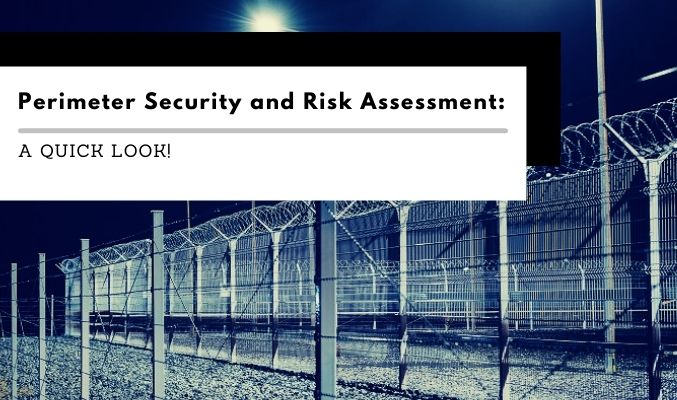

To map out an effective perimeter security plan, you need to do a thorough risk assessment of the property. This is particularly important for industrial properties, which are usually very large with several vulnerable touchpoints that are easy to exploit by the perpetrators. Therefore, to put off any attempt of intrusion, one must identify potential security risks. The insights then will influence the perimeter security preparation and execution.
In the perimeter security field, threat analysis plays a very important role. In order to be able to establish security measures that are effective, it is necessary to have a detailed knowledge of the threats to be expected. The main objective of the threat analysis is to identify all hazards and risks which can possibly affect the object or person to be protected and their surroundings.
Accordingly, threat analysis is an essential precondition for security-oriented decisions and should be carried out as early as possible in the planning phase. The results are also relevant for later phases, such as in the event of adjustments or changes in the existing protection measures.
Threat analysis can be carried out using both qualitative and quantitative methods. The basis for quantitative risk assessment is normally a system of ranking (threat ranking). In this form, threats are arranged by importance according to some criteria (severity, probability, criticality) and then assigned to corresponding risk levels (high, medium or low). These rankings can be used to allocate resources available for security measures more effectively. Quantitative methods such as threat ranking are often required by law within certain sectors of industry (e.g. military technology, nuclear power generation).
The range of possible attacks on perimeter security is wide and includes e.g. burglary and sabotage by organized crime, opportunistic crimes such as sexual assault and theft, terrorist attacks, acts of war and the threat posed by demonstrations or protests. In addition to this, there are various natural disasters, such as floods, earthquakes or storms that must also be taken into account.
The list of threats is not complete; it merely illustrates the most important sources of danger. Naturally, the relevant threat analysis must be linked with the respective risk analysis in order to identify countermeasures that will effectively eliminate the risks in question. The threat analysis thus serves as a basis for the selection of measures.
The analysis of perpetrator profiles for perimeter security is a valuable tool in the security concept. The perpetrator is the key factor for an abstract threat to become tangible.
Targets of criminal offenses range from cash and valuables over business data and intellectual property to people. The protection goals are defined on the basis of this risk analysis and determine the relevant protection measures.
Here, different risk scenarios can be distinguished:
1. The single perpetrator who wants to steal something or take revenge
2. The organized crime group that operates from a professional point of view, targets high-value goods or wants to kidnap people
3. A group of perpetrators who execute a crime casually with little preparation and technical equipment like home-made weapons. It is assumed that they do not know the target person or location in advance
4. An insider is someone who has inside knowledge about the targeted object or facility. These include former employees, family members, private individuals who have gained access to company premises or workers who have been blackmailed. An insider may cause serious damage through sabotage or theft of valuable information. In addition, they are able to transmit confidential information out of their circle of acquaintances and therefore may endanger co-workers in a second circle.
Of course, perpetrator profiles can be made based on so many different factors. So, depending on your business, locality and the kind of industrial property you’re creating a perimeter security plan for, create perpetrator profiles accordingly.
The security concept is the starting point for a systematic analysis of the object and its protective measures. An essential part of the analysis is an investigation of all available protection measures, their condition, their state of development, and their effectiveness in preventing potential threats from materializing. The results of this analysis should also include a consideration of any vulnerable points that might represent a threat even though they are not subject to direct attack.
So, in addition to other aspects, also identify the vulnerable points on the property. Thereon, consolidate an effective perimeter security plan that’s foolproof.